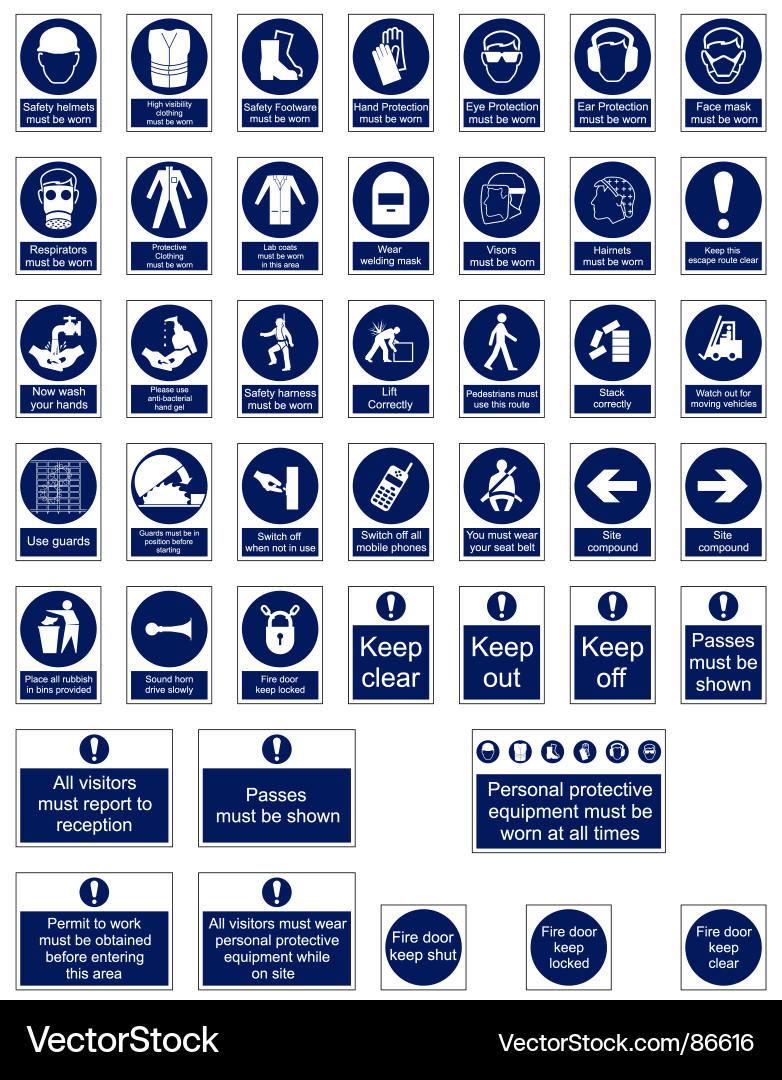Picking the Right Safety Signage: Trick Aspects for Workplace Safety Success
Picking the Right Safety Signage: Trick Aspects for Workplace Safety Success
Blog Article
Kinds Of Safety Indications You Required to Know for Ultimate Security

Indication
Indication play an important duty in making sure security by sharing vital info about possible risks. These signs are essential in different settings, including workplaces, public locations, and roadways, where they alert individuals to threats that might not be instantly noticeable. Common instances of warning indicators consist of those showing slippery surface areas, electrical risks, and low overhead clearance.

It is necessary for companies to routinely evaluate the placement and presence of caution indications to ensure they properly communicate risks. Educating employees and the public on the significances of these signs additionally strengthens their relevance in promoting safety and security society - Safety Signage.
Restriction Signs
Prohibition signs function as vital signs designed to interact restrictions and habits that must be prevented in specific areas. These indicators are crucial for making certain security and conformity, aiding to stop crashes and alleviate threats in different environments, consisting of workplaces, public areas, and construction sites. Typically identified by a bold red circle with a diagonal line, prohibition indications communicate a clear message that certain actions are not permitted.
Common examples consist of indications that prohibit smoking cigarettes, eating, or entry right into limited locations. The performance of these signs depends upon their exposure and simplicity, making it easy for people to recognize the intended message at a glance. Appropriate positioning is vital; they should be found in high-traffic areas and near the factors of potential infraction to make best use of recognition.
Prohibition indicators not just shield individuals yet additionally promote legal needs and organizational policies (Health and Safety Signs). Their use fosters a society of security and regard for guidelines, adding to a more secure atmosphere for everyone. As a result, understanding and sticking to the regulations of prohibition indications is essential to make certain conformity and promote overall safety and security in any offered area.
Compulsory Indicators
Obligatory indications are crucial components of safety communication, made to inform individuals of activities that need to be required to ensure security and compliance in different settings. These indicators are identified by their distinct blue background and white symbols or text, conveying clear instructions that need to be complied with.
Usual instances of obligatory indicators include directives such as "Wear Personal Safety Tools" (PPE), "Usage Hearing Security," and "Need To Wash Hands." Each of these indications serves a particular function, targeting habits that improve safety and security and alleviate risks in work environments, public centers, and construction sites.
The value of obligatory indicators can not be overstated; they not only assist in avoiding accidents and injuries however likewise ensure adherence to organizational policies and lawful laws. In environments where dangers prevail, the existence of these signs enhances a society of safety and security and accountability amongst all people.
To maximize their performance, required indicators ought to be positioned in noticeable places, guaranteeing they are conveniently seen and recognized by every person around - Safety Signs. Regularly inspecting and maintaining these signs is likewise essential to ensure their clarity and exposure, thus advertising a safer setting for all
Emergency Situation Details Signs
Emergency info signs play an essential role in leading individuals during dilemmas, supplying essential information that can help make certain safety and promote efficient action actions. These signs are designed to supply clear and prompt guidelines in emergency scenarios, such as fires, chemical spills, or all-natural catastrophes.
Commonly, emergency information indications include important details such as emptying paths, emergency situation call numbers, locations of emergency treatment stations, and instructions for making use of emergency situation tools, such as fire extinguishers or defibrillators. Their design often includes bold colors, high contrast, and universally well-known symbols to ensure presence and understanding also in high-stress circumstances.
It is essential for organizations to regularly review and upgrade their emergency situation info signs to mirror any adjustments in structure formats, emergency situation procedures, or call details. Proper positioning of these indicators is similarly vital; they ought to be placed in areas with high foot traffic and at eye degree to make sure that they are conveniently noticeable throughout emergencies.
Standard and Directional Indications
Standard and directional signs are necessary devices for navigation within numerous environments, ensuring that people can find their means successfully and securely. These indications offer a crucial feature in both personal and public areas, including work environments, hospitals, colleges, and recreational locations.
Usually including arrows, icons, or text, guideline and directional signs offer clear directions on navigating complicated formats. They help prevent confusion and reduce the risk of crashes by routing people in the direction of exits, toilets, and specific sights. Effective signs is developed to be quickly identifiable, frequently utilizing standard shades and index forms to communicate info swiftly.
Along with helping navigation, these indications play an important role in emergency readiness. During dilemmas, well-placed directional signs can lead individuals to security, minimizing panic and making sure orderly emptyings. Regular maintenance and updates to these signs are essential, as altering formats navigate to this site or new risks might necessitate changed assistance.
Final Thought

Understanding the differences in between caution signs, restriction indicators, mandatory indications, and emergency situation information signs can considerably boost overall safety recognition.Caution signs play an important role in guaranteeing safety and security by sharing crucial information about prospective hazards. These indications are important for making certain safety and security and conformity, assisting to stop mishaps and alleviate threats in different atmospheres, consisting of workplaces, public areas, and building and construction websites. During dilemmas, well-placed directional indications can lead people to safety and security, minimizing panic and making sure organized evacuations. Warning signs, restriction indicators, compulsory indications, blog and emergency situation information and directional indications each offer distinctive purposes in communicating essential details relating to dangers, restrictions, safety and security activities, and navigational advice.
Report this page